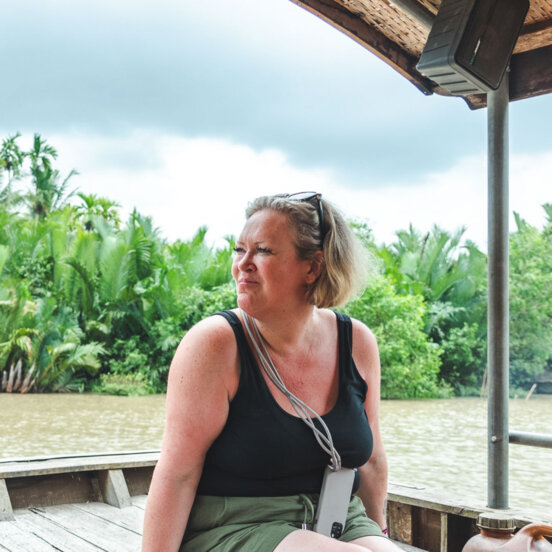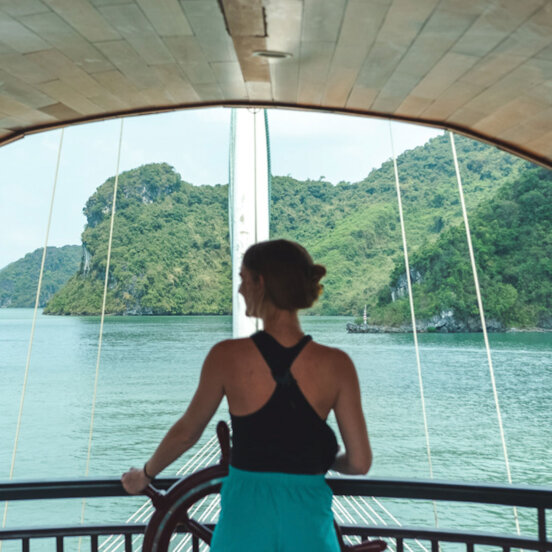The world’s best places for wild swimming and hot spring bathing

We always feel better after a swim outdoors but why? As research shows that hitting the pool just once a month eases anxiety and depression, we take a closer look at the feel-good effect of wild swimming – along with the world’s top 10 best places to take the plunge.
What is wild swimming?
Wild swimming basically means swimming in any natural body of water, from lakes to wadis or the sea. Since the world’s best beaches are a topic of their own, this article focuses on wild swimming in non-ocean spots. We’ve also included a few destinations for hot spring bathing.
Wild swimming has become hugely popular over the past few years, in part because of impact on wellbeing. In a digitally obsessed age, wild swimming offers a rare chance to down tools and reconnect with nature. Further down, we’ll dive into the world’s best places for wild swimming – but first, a look at its many health benefits:
What are the benefits of wild swimming?

- Swimming is like meditation
Stressful crawl lessons in the school swimming pool may have taught you otherwise, but swimming can be a deeply calming act. The steady, repetitive motion of cutting through the water helps you to escape the chaos in your head and focus on the moment. “Going for a swim enables me to switch off from everything,” travel journalist Anna Goldrein tells Psychologies. “I’m not being bombarded by stimulation as I am for the rest of my day. It’s just me and my mind moving through the water, which is very liberating, and because swimming is so rhythmical, it’s like doing yoga in water.” Good breathing is great for getting into the flow, too, as this guide to mindful swimming illustrates.
- Nature makes us happier
Being in nature only enhances the soothing effect of swimming. We evolved in an outdoor environment, so it makes sense that we are at our happiest there. Swimming alfresco amid a canvas of trees or mountains is an antidote to modern life. It allows our overloaded minds to wander, with the soft focus of water, leaves and morning mist drawing away from incessant head-chatter. It’s why outdoor swimmers and triathletes often describe moments of sheer euphoria after steeling themselves into a sunrise river or alpine lake.

- Cold water can help with depression
When you immerse yourself in water of 20°C or less, it sparks your body’s stress response, with flight-or-fight symptoms such as increased heart rate, blood pressure and the release of the stress hormones cortisol and adrenaline (it can be dangerous, though – always follow these tips). This response lessens with exposure, and some scientists believe it can help to blunt your reactions to other daily stresses, especially those experienced by people with depression. In one documentary, a 24-year-old woman with depression gave up medication and was symptom-free four months after being prescribed weekly cold water swimming sessions. “The transformation into someone bursting with energy and smiles was staggering,” writes Doctor Mark Harper, who was involved in the experiment, in the Spectator. “She had been taking antidepressants for eight years but within four months she was off them and managing her symptoms with swims in a local lake.”

- It may ease other conditions, too
Cold water stimulates blood flow, improving circulation and relieving inflammation. Inflammation, in turn, is a mechanism of many health conditions, from depression to bowel disease and even the common cold. One study found sea swimmers suffered significantly less frequent and severe colds during the winter, compared to those who didn’t swim outdoors. Of course, cold water swimming isn’t an instant cure. But science indicates that it can have a positive effect on the immune system, in symphony with its anti-stress benefits.
- Hot water bathing is also therapeutic
For those of you who just can’t stand the chill, hot spring bathing is also a boon for wellbeing. Right back to Roman times, physicians used “the water cure” as a means to heal the body and mind. Warm water causes blood vessels to relax: this increases blood flow to muscles, which relieves tension and mental fatigue. Multiple studies have also shown bathing to reduce anxiety and promote the release of feel-good serotonin. Being in nature again amplifies this benefit, and many of the world’s volcanic hot springs come with mineral-rich waters which are beneficial in their own right.
So, now you know the rich benefits of wild swimming and alfresco bathing, here’s where to enjoy them the most:
Hot spring bathing in Japan

The UNESCO World Heritage Site of Koyasan is considered to be one of Japan’s most sacred temple enclaves, surrounded by forests and mountains. Experience a Shukubo (home stay) here and you’ll get an insight into the calming rituals of monastic life, including hot spring bathing. Same-sex onsens are havens of wellbeing in Japan, with warm, mineral-rich waters fringed by the beauty of the wild.
Iceland's Blue Lagoon

Set in an 800-year-old lava field in the Reykjanes Peninsula, this geothermal hot spot is filled with warm, milky-white water. Feel your entire body loosen up as you wallow in the toasty lagoons, heated to around 37-40°C, with plumes of steam casting tendrils into the vast skies above.
Lake Bled, Slovenia

Nestled at the foot of the Julian Alps in northwestern Slovenia is Lake Bled, a remnant of the last ice age and the most-visited attraction in Slovenia. This picturesque lake features a 17th Century church on an island and an ancient castle on the banks. This fairytale setting is yours to paddle in come summer, with warm waters and a number of beach/bathing areas around the rim.
The Rosario Islands, Colombia

The sparkling Rosario Islands comprise a Caribbean paradise off the coast of Cartagena. This maze of 27 islets, some uninhibited and others private, is set amid magnificent coral reef, with a rich ecosystem (think sea turtles and reef sharks), and many hidden beaches. The best place, in other words, for a spot of island-hopping by private boat, stopping off anywhere from Cholon, with its thatched swim-up bars, to Gente De Mar, with incredible snorkeling. Sea swimming doesn’t get much more “wow”.
Cleopatra's Pool, Turkey

This world-famous bathing spot perches above the white travertine pools at the UNESCO World Heritage site of Pamukkale. The pure clear warm water where Cleopatra herself once bathed is so steeped in history, you’ll find yourself swimming between Roman Temple columns that toppled into the pool during a 7th Century earthquake. A beautiful and restorative swimming spot.
A private Adriatic island in Croatia

Between Split and Dubrovnik, you’ll find the remote village of Mali Ston – one of the last untouched areas of Croatia’s much-loved coastline. This is a super-scenic and tranquil area to swim in, especially if you’re traveling with Flash Pack. Our adventure here unlocks a private island experience. We’ll be meeting up with a family of oyster restaurateurs who own their own island in the Adriatic Sea: the ideal place to kick back for the afternoon, with zero crowds about.
The Dead Sea, Jordan

The lowest point on Earth is actually hard to swim in, not least because the rich salt content means you should never put your head under. But, of course, that same saltwater gives this lake its incredible buoyancy, meaning you can effortlessly float on the surface (reading a newspaper or book for the classic Insta-shot). There is also mineral mud nearby for you to paste yourself in and scrub off again, creating the ultimate therapeutic wallow.
The private Ginto island in the Philippines

Ginto (meaning “gold”) island, in the Palawan region of the Philippines, comes with serious castaway vibes. For starters, Flashpackers have the entire island completely to themselves, complete with luxury one-man mesh tents and BBQs from a private chef. And secondly, it just so happens to be situated in one of the world’s most breathtaking beach regions. Palawan is an archipelago of cliffs, coves and warm, turquoise waters that were made for sprawling in, all day long.










